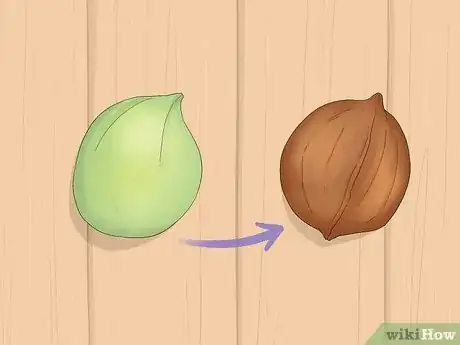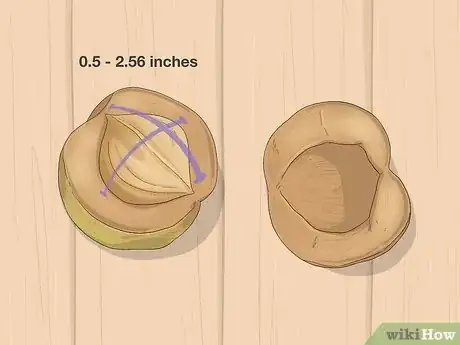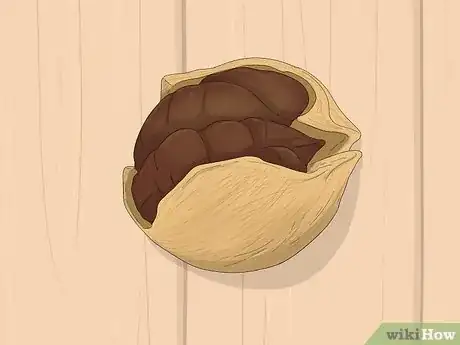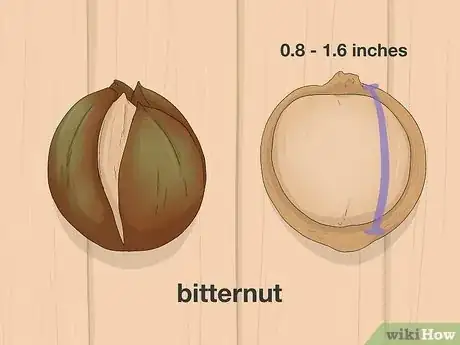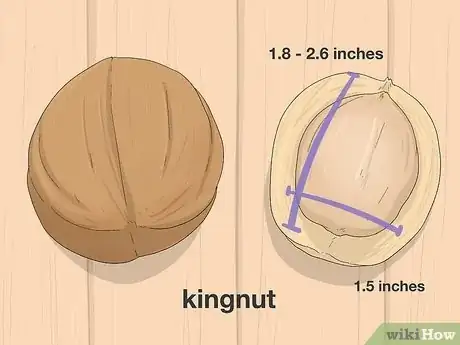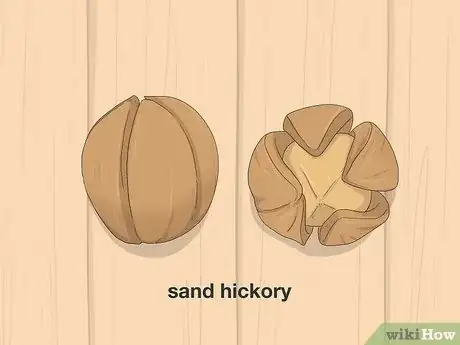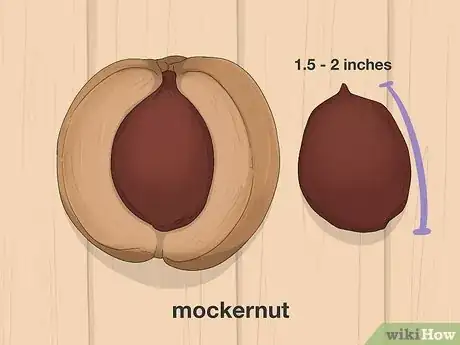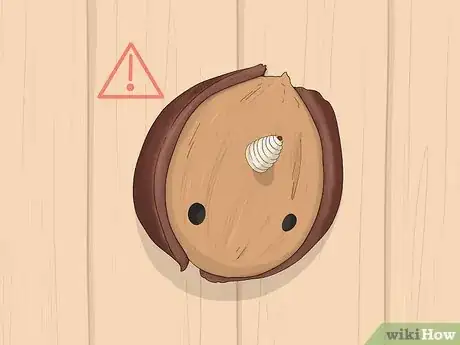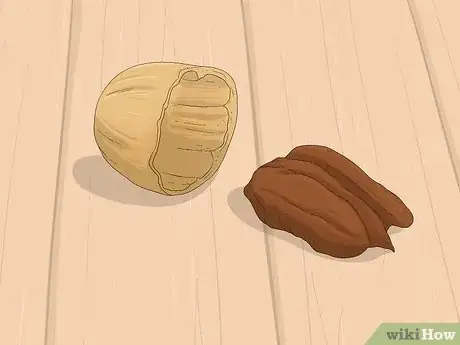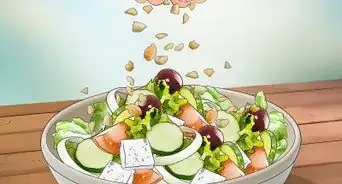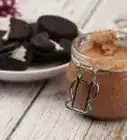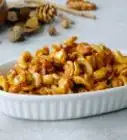This article was co-authored by Michael Simpson, PhD. Dr. Michael Simpson (Mike) is a Registered Professional Biologist in British Columbia, Canada. He has over 20 years of experience in ecology research and professional practice in Britain and North America, with an emphasis on plants and biological diversity. Mike also specializes in science communication and providing education and technical support for ecology projects. Mike received a BSc with honors in Ecology and an MA in Society, Science, and Nature from The University of Lancaster in England as well as a Ph.D. from the University of Alberta. He has worked in British, North American, and South American ecosystems, and with First Nations communities, non-profits, government, academia, and industry.
There are 7 references cited in this article, which can be found at the bottom of the page.
wikiHow marks an article as reader-approved once it receives enough positive feedback. This article has 14 testimonials from our readers, earning it our reader-approved status.
This article has been viewed 319,334 times.
Hickory nuts are the fruit of the hickory tree, which is in the walnut family. There are over 16 species of hickory tree, and they share some similar characteristics, such as a compound leaf structure, a straight and narrow trunk, an average height of about 100 feet (30.48 m) and relatively large fruit. Follow these guidelines to learn what traits define hickory nuts, which species are edible and how to cure and crack them.[1]
Steps
What to Look For
-
1Look for a woody outer shell or husk. Hickory nut husks are light green while they ripen. Once they mature, they turn a dark brown and fall from the tree.[2]
- The texture of a hickory nutshell may be smooth, with minimal veining, or considerably irregular and furrowed.
- Husks split open at the base once the fruit (nut) inside has fully ripened, although some species partially encapsulate the hickory nut even after splitting.
- Husks vary in thickness from 2 mm to 9 mm, depending on the hickory nut species
-
2Measure the shells with a ruler. When separated from the husk, hickory nuts may measure anywhere between 0.5 inch (13 mm) and 2.56 inches (6.5 cm) long and equally as wide, depending on the species.[3]Advertisement
-
3Examine the shape. Look for circular, heart-shaped or oblong nuts that are either slightly flat or rounded. Depending on the species, hickory nuts can have any of these shapes.[4]
-
4Taste the nut meat. Several hickory species yield a sweet, edible meat, while others yield bitter meat that one should not eat.[5]
-
5Look for a densely veined inner chamber. The inside of a hickory nut's shell is veined, which can make it difficult to remove the nut meat.[6]
-
6Learn about different hickory species. The 16 species of hickories each product slightly different nuts. Find out which species live in your area so you'll know exactly what to look for and you can determine whether the nuts you find are edible.[7]
Identifying Species
-
1Identify shagbark hickory nuts. You may find these nuts alone, or in a pair. They may be anywhere from 1.2 inches (3 cm) to 2 inches (5 cm) long, and slightly less wide. The brownish-black husk is a medium thickness, and easily splits open to reveal a light brown, heart-shaped, textured and thin-shelled fruit. The kernel of the shagbark is brown and sweet.[8]
-
2Identify southern shagbark hickory nuts. The husk of a southern shagbark is 0.12 inch (3mm) to 0.35 inch (9mm) thick, and the egg-shaped shell is smooth, relatively thin and easy to crack open. Southern shagbark nut meat is a light-brown color, and sweet to the taste.[9]
-
3Identify bitternut hickory nuts. The shell of a bitternut may be anywhere between 0.8 inch (2 cm) to 1.6 inches (4 cm) long. It is a rounded, light-brown nut, enclosed in a thin, yellow-scaled husk. The kernel of the bitternut is bitter, as the name suggests.[10]
-
4Identify pignut hickory nuts. Pignuts generally mature to be about 1 inch (2.5 cm) long and 0.8 inch (2 cm) wide. The husk is thin and dark brown, and must be split manually, as it rarely splits on its own. The pear-shaped pignut shell is thick, smooth and grayish brown. Pignut meat is bitter and slightly bland.[11]
-
5Identify red hickory nuts. This nut measures approximately 1 inch (2.5 cm) to 1.2 inches (3 cm) long and 0.8 inch (2 cm) wide. The dark husk is about 0.08 inch (2 mm) thick and splits freely on its own to reveal a light brown, rounded and thin shell. The meat of the red hickory is small and sweet.[12]
-
6Identify kingnut, or shellbark hickory nuts. This is the largest of the hickory nut species, growing to between 1.8 inches (4.5 cm) and 2.6 inches (6.5 cm) long, and 1.5 inches (3.8 cm) wide. The oval-shaped shell of the kingnut is very thick, light brown and slightly furrowed. Because the shell is so thick, there is little room for the meat, which is sweet.[13]
-
7Identify sand hickory nuts. This is the smallest of the hickory nuts, averaging between 0.5 inch (13 mm) and 1.45 inches (37 mm) long. The husk is light brown and thin, and splits only partially to reveal the shell, which is oval and slightly flattened, light in color, smooth, furry and relatively thin. The kernel of the sand hickory is sweet.[14]
-
8Identify mockernut hickory nuts. The mockernut is 1 of the larger hickory nut species, growing anywhere between 1.5 inches (3.8 cm) and 2 inches (5 cm) long, and with a thick husk, between 0.12 inch (3 mm) and 0.24 inch (6 mm) thick. The mockernut shell is rectangular in shape, reddish brown and smooth. The meat is edible and sweet, but difficult to remove because of the thickness of the shell.[15]
Cracking and Curing
-
1Break off the husks. Hickory nuts that are ripe will blow off the tree in a brisk wind and land on the ground with the husks already open. After you collect all the nuts you want, remove the husks and discard them.
-
2Check the nuts for nut weevil infestation. Nut weevils bore holes in the shells of hickory nuts and eat the meat inside. If you see small holes in the nuts, you might as well throw them away instead of taking the time to crack them; the meat is sure to be ruined by a grub.[16]
-
3Crack the shells. Most hickory nuts have tough shells that can't be cracked with a standard nutcracker. You can buy a special cracker used for walnuts, use a vise, or crack them open with a rock. Try not to damage the meat inside.[17]
- If you use the rock method, place a nut on a piece of flat concrete, then slam the nut with a wide rock until the shell cracks.
- It's hand to use a nutcracker to finish the job once the shell is partially open.
- You can save the shells and burn them along with wood to help a fire last longer.
-
4Pick the nuts. Hand pick shards of shell from the nut meat, so you have a clean bowl of nut halves and pieces. Try to save as much of the meat as you can.
-
5Enjoy the nuts. Hickory nuts can be used the same way as any other type of nut. Snack on them raw, use them in pies and baked goods, or try them roasted and salted. If you're feeling adventurous, try making hickory nut butter.
- Leftover hickory nuts should be kept in an airtight container in the refrigerator. They will keep for a few months before rotting.
- Or you can freeze the nuts for up to a year. Pack them tightly in freezer-safe containers, removing as much of the air from the containers as possible. Label the containers and store them in the freezer.
Community Q&A
-
QuestionHow old should a hickory tree be before producing nuts?
 Community AnswerIt depends on the presence of other hickory trees upwind. A hickory tree will probably bloom in three to five years, depending on soil type, temperature variations, local growing seasons and wind loading. It will only bloom once if there is not another hickory nearby for the bees to cross-pollinate from. The second blooming season should yield nuts, but they will not be edible. The third through seventh seasons will produce useable nuts and then a one- to two-year dormancy will occur.
Community AnswerIt depends on the presence of other hickory trees upwind. A hickory tree will probably bloom in three to five years, depending on soil type, temperature variations, local growing seasons and wind loading. It will only bloom once if there is not another hickory nearby for the bees to cross-pollinate from. The second blooming season should yield nuts, but they will not be edible. The third through seventh seasons will produce useable nuts and then a one- to two-year dormancy will occur. -
QuestionWhat time of year do I pick nuts?
 Community AnswerThe best time to harvest hickory nuts is from late summer to mid-autumn. That is when the hickory nuts are ripe and most likely to fall.
Community AnswerThe best time to harvest hickory nuts is from late summer to mid-autumn. That is when the hickory nuts are ripe and most likely to fall. -
QuestionHow do I crack a hickory nut?
 Community AnswerPile them in the driveway, place a sheet of plywood over the nuts and drive over them to crack the shells. Then pick out the meat.
Community AnswerPile them in the driveway, place a sheet of plywood over the nuts and drive over them to crack the shells. Then pick out the meat.
References
- ↑ http://bioimages.vanderbilt.edu/pages/carya-fruits.htm
- ↑ https://www.seriouseats.com/2013/10/foraged-flavor-wild-hickory-nuts.html
- ↑ http://bioimages.vanderbilt.edu/pages/carya-fruits.htm
- ↑ http://bioimages.vanderbilt.edu/pages/carya-fruits.htm
- ↑ https://www.survival-manual.com/edible-plants/hickory.php
- ↑ http://bioimages.vanderbilt.edu/pages/carya-fruits.htm
- ↑ https://extension.tennessee.edu/publications/Documents/PB1810.pdf
- ↑ https://artofeating.com/shagbark-hickory-nuts/
- ↑ http://bioimages.vanderbilt.edu/pages/carya-fruits.htm
- ↑ http://bioimages.vanderbilt.edu/pages/carya-fruits.htm
- ↑ http://bioimages.vanderbilt.edu/pages/carya-fruits.htm
- ↑ http://bioimages.vanderbilt.edu/pages/carya-fruits.htm
- ↑ http://bioimages.vanderbilt.edu/pages/carya-fruits.htm
- ↑ http://bioimages.vanderbilt.edu/pages/carya-fruits.htm
- ↑ http://bioimages.vanderbilt.edu/pages/carya-fruits.htm
- ↑ https://hortnews.extension.iastate.edu/2008/10-8/nutweevil.html
- ↑ http://www.silysavg.com/tutorials/easy_open_hickory_nuts.html
About This Article
To identify edible hickory nuts, start by looking for circular, heart-shaped, or oblong nuts that measure between 0.5 to 2.6 inches. Depending on the variety, the nuts will be slightly flat or rounded, with a texture that's smooth and minimally veined, or considerably irregular and furrowed. Additionally, check that the shell or husk is dark brown, which indicates that the meat inside has ripened. In order to eat your nuts, crack open the shells with a walnut cracker and use your fingers to pick the meat out of the shell. To learn more, including how to identify specific species of hickory nuts, read on!
